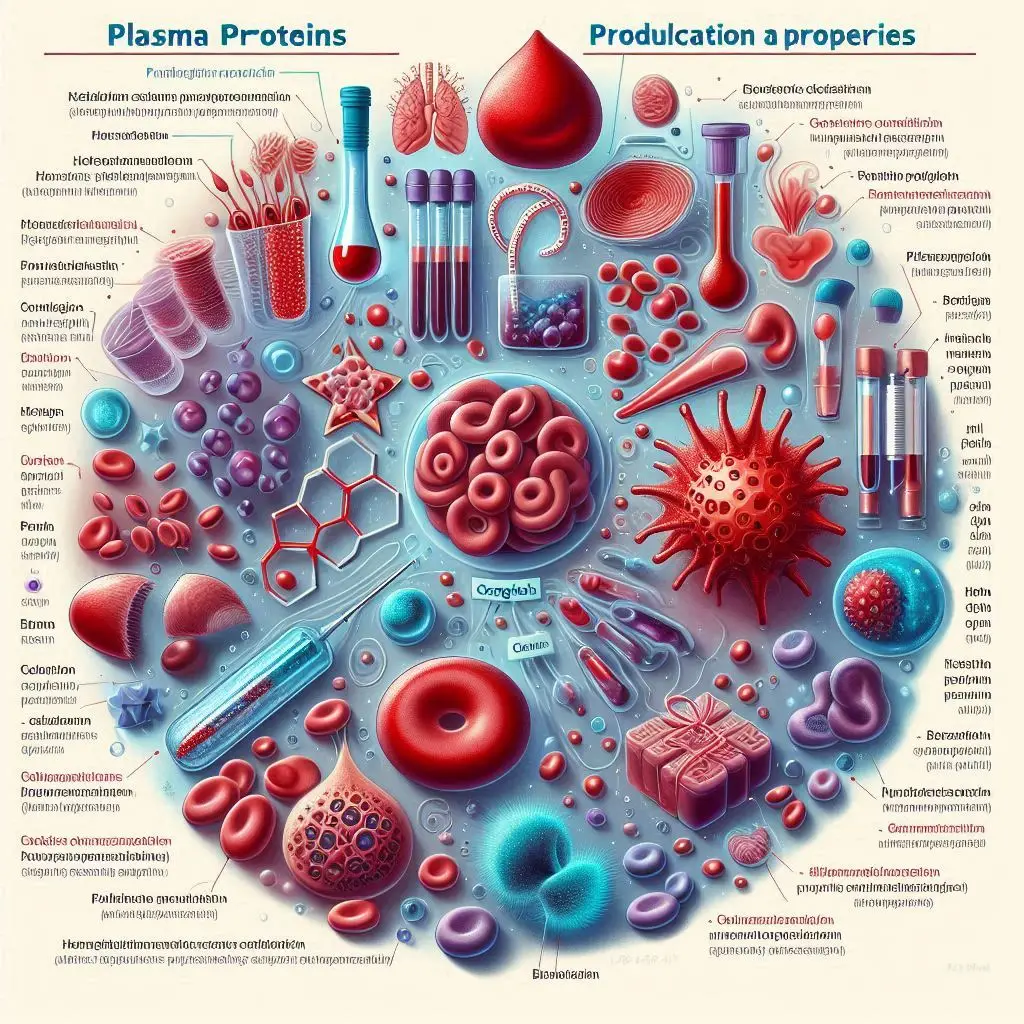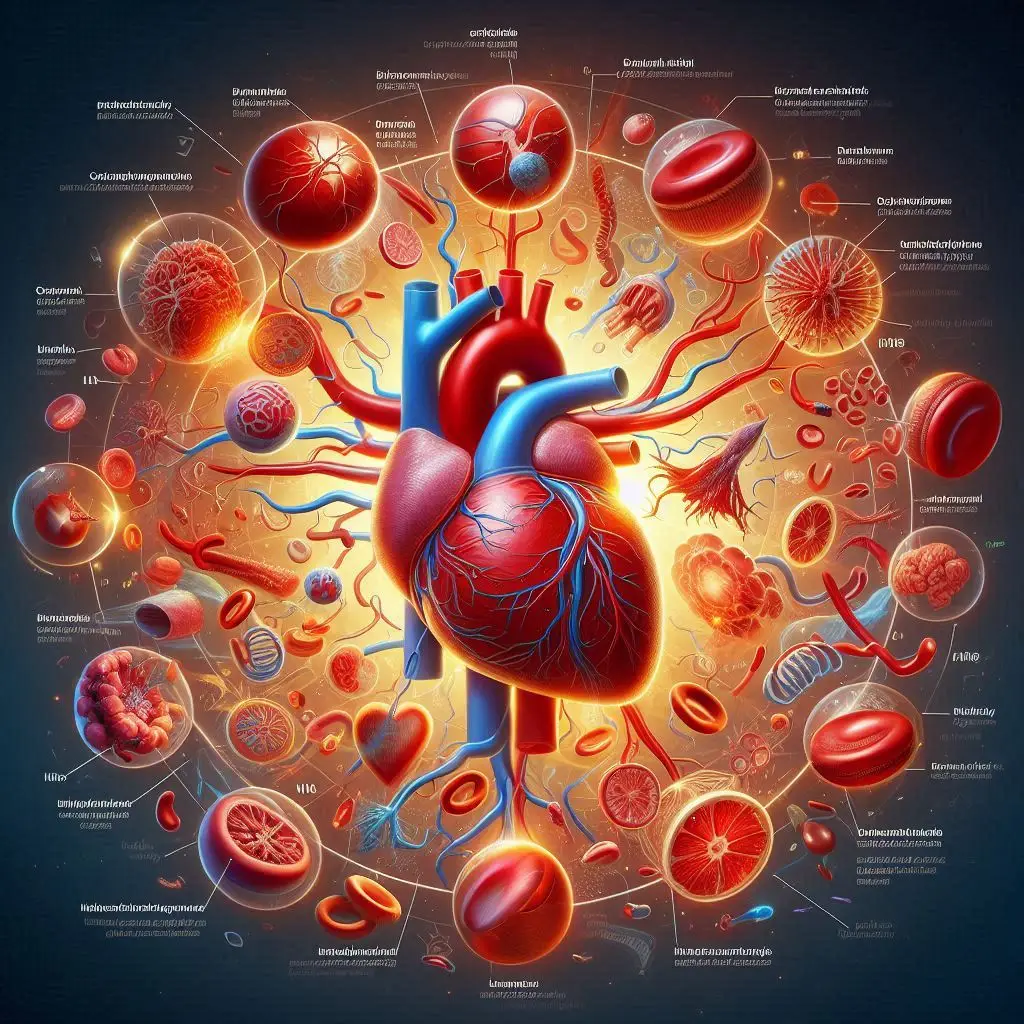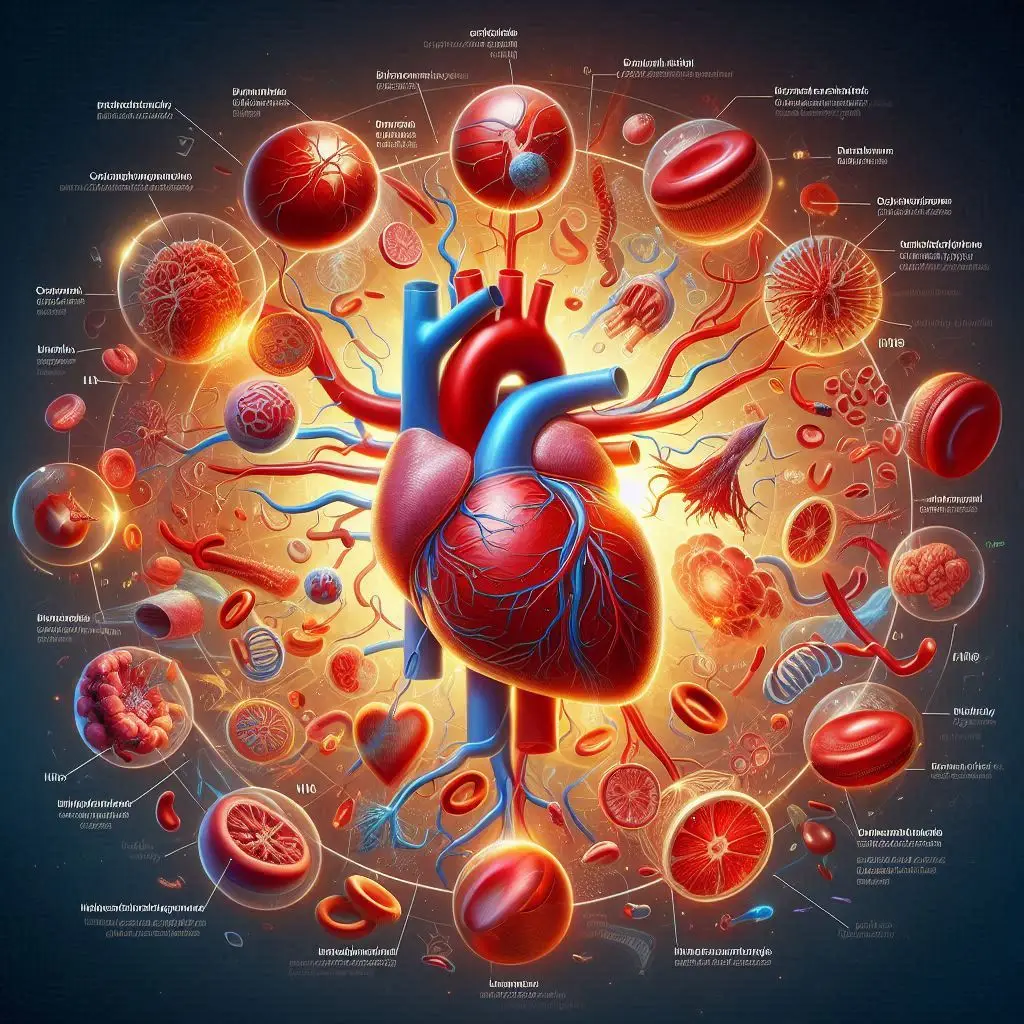Work and efficiency of heart, Effect of ions on heart function, Metabolism of Cardiac muscle

The Mechanics of Cardiac Work
The heart’s primary function is to pump blood effectively, which involves both mechanical and energetic aspects. The left ventricle (LV) is primarily responsible for systemic circulation, exerting pressure to propel blood into the aorta. The work done by the heart can be categorized into two types:
- Constructive Work: This is the effective work done by the heart to eject blood into the circulation.
- Wasted Work: This includes energy expended on non-productive activities, such as overcoming vascular resistance or generating heat.
Measuring Cardiac Efficiency
Cardiac efficiency is often expressed as myocardial work efficiency (MWE), defined as the ratio of constructive work to total work (constructive + wasted work). In healthy individuals, MWE averages around 96.0%, indicating that the heart is highly efficient in converting energy into mechanical work.
Factors Influencing Cardiac Efficiency
Several factors can influence the efficiency of the heart, including:
- Heart Rate: An increased heart rate can enhance cardiac output but may also lead to decreased efficiency if the heart does not have adequate time to fill between beats.
- Preload and Afterload: Preload refers to the volume of blood in the ventricles at the end of diastole, while afterload is the resistance the heart must overcome to eject blood. Optimal preload and afterload conditions are essential for maximizing efficiency.
- Contractility: The intrinsic ability of cardiac muscle fibers to contract affects the heart’s efficiency. Increased contractility can enhance stroke volume, improving overall work output.
Thermodynamic Efficiency of the Heart
The thermodynamic efficiency of the heart is defined as the ratio of useful work output to the energy input. In healthy hearts, this efficiency typically ranges from 20% to 25%. However, in pathological states such as heart failure, this efficiency can drop significantly, sometimes falling to as low as 5% to 10%. This decline underscores the importance of maintaining heart health to ensure optimal energy utilization.
Effect of Ions on Heart Function
The Role of Ions in Cardiac Action Potentials
Ions are fundamental to the electrical activity of the heart. The generation and propagation of action potentials in cardiac myocytes (heart muscle cells) depend on the movement of specific ions across the cell membrane. The key ions involved in cardiac function include:
- Sodium (Na⁺): Sodium ions are crucial for depolarization during the action potential. When sodium channels open, Na⁺ rushes into the cell, causing a rapid increase in membrane potential.
- Calcium (Ca²⁺): Calcium ions play a vital role in myocardial contraction. During the plateau phase of the action potential, calcium enters the cell, triggering the release of more calcium from the sarcoplasmic reticulum and facilitating the interaction between actin and myosin filaments, leading to contraction.
- Potassium (K⁺): Potassium is essential for repolarization, restoring the resting membrane potential after contraction. The efflux of K⁺ from the cell helps return the membrane potential to its resting state, allowing the heart to prepare for the next contraction.
Ion Concentration and Cardiac Function
The concentrations of these ions are tightly regulated, and any alterations can lead to significant cardiac dysfunction. For example:
- Hyperkalemia (elevated potassium levels) can reduce the resting membrane potential, leading to decreased excitability and contractility of the heart muscle. This condition can result in arrhythmias or even cardiac arrest.
- Hypocalcemia (low calcium levels) can impair myocardial contractility, reducing the heart’s ability to pump effectively. Conversely, hypercalcemia can lead to increased contractility but may also predispose the heart to arrhythmias.
- Hyponatremia (low sodium levels) can affect the action potential duration and overall cardiac rhythm, potentially leading to arrhythmias.
The Importance of Ion Channels
Ion channels are proteins embedded in the cell membrane that facilitate the movement of ions in and out of cardiac myocytes. These channels are critical for maintaining the heart’s electrical stability. Dysfunction in ion channels can lead to various cardiac conditions, including:
- Long QT Syndrome: A condition characterized by prolonged repolarization of the heart, increasing the risk of life-threatening arrhythmias.
- Bradycardia: A slower than normal heart rate, often due to altered ion channel function affecting conduction pathways.
- Atrial Fibrillation: An irregular and often rapid heart rate that can be influenced by ion channel dysfunction, leading to ineffective blood pumping.
Metabolism of Cardiac Muscle
Energy Sources for the Heart
Cardiac muscle metabolism is predominantly aerobic, relying on oxygen to generate adenosine triphosphate (ATP) through oxidative phosphorylation. The heart utilizes various substrates to meet its energy demands, including:
- Fatty Acids: The primary energy source under normal physiological conditions, fatty acids are oxidized in the mitochondria to produce ATP.
- Glucose: Particularly important during periods of increased demand or ischemia, glucose can be metabolized anaerobically to generate ATP, although less efficiently than fatty acids.
- Lactate: Under anaerobic conditions or when glucose levels are low, lactate can serve as an alternative energy source, especially in the context of ischemic heart disease.
Metabolic Flexibility
The heart exhibits metabolic flexibility, allowing it to switch between different energy substrates based on availability and demand. For instance, during exercise or stress, the heart may increase glucose uptake and utilization to meet heightened energy requirements. Conversely, during fasting or prolonged exercise, fatty acid oxidation may become predominant.
Implications of Metabolic Dysfunction
Metabolic dysfunction in cardiac muscle can significantly impact heart efficiency and performance. Conditions such as obesity, diabetes, and heart failure can lead to altered substrate utilization, resulting in increased oxygen consumption and decreased efficiency. This inefficiency contributes to the progression of heart disease and emphasizes the importance of metabolic health in maintaining cardiac function.
Mitochondrial Function and Cardiac Health
Mitochondria are the powerhouses of the cell, responsible for ATP production through oxidative phosphorylation. In cardiac muscle, mitochondrial function is crucial for sustaining energy demands. Impaired mitochondrial function can lead to decreased ATP production, increased oxidative stress, and ultimately, myocardial injury. Research has shown that enhancing mitochondrial function through lifestyle interventions, such as exercise and diet, can improve cardiac efficiency and overall heart health.
Conclusion
Understanding the work and efficiency of the heart, the influence of ions on cardiac function, and the metabolism of cardiac muscle is essential for appreciating the complexities of cardiovascular health. Maintaining optimal heart function requires a delicate balance of mechanical efficiency, ion homeostasis, and metabolic flexibility.
For more pearls of Vets Wisdom:





Responses